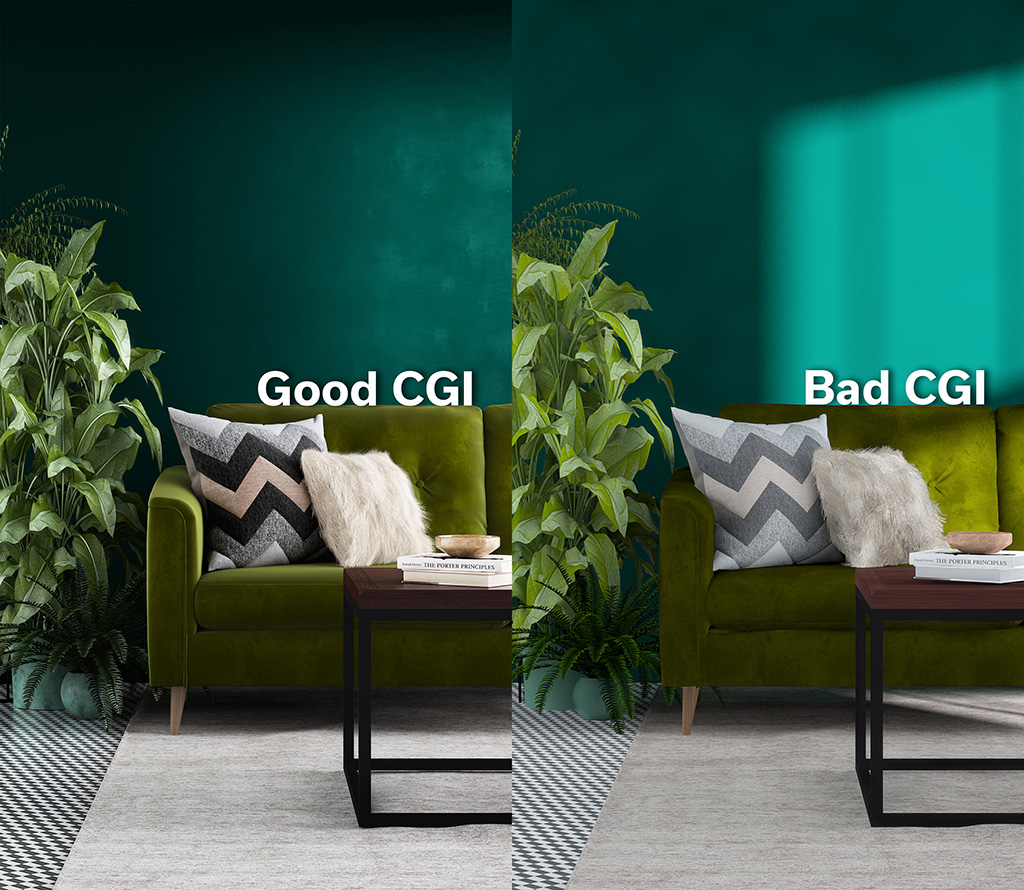
3D visualisation comparison – good and bad CGI
At first glance there does not appear to be much difference between the images on these pages. Look closely however and there are some very important differences between the two. If these differences are overlooked, missed or ignored within your suppliers images they will cause a subtle yet significant loss of quality and realism.
The artists at Red and Gray spend a lot of time analysing the images they prepare in the pre-production phase to see where extra detail can be added within the budgetary limitations of the project to maximise the realism and final appeal of their finished work.
What, at first glance appears to be a good CGI, with further study, may turn out to be not so good after all. Use our generic example points here to learn about some of the subtleties of CGI quality and the effect it can have on the overall power of the image.
Let’s explore the subtleties of good and bad CGI’s
Everyone loves a “spot the difference” diversion. So, in the interests of fun take a look at the images above. Spot the differences? Those differences are what separates good CGI and mediocre CGI and after you have read and understood the finer details, listed below, you will, hopefully, better understand the CGI’s you are receiving from your supplier and if they suit your purpose in terms of quality and realism.
Wall Detail
BAD: Flat colour only. No visible texture or surface distortion.
GOOD: Natural surface discolouration. Texture to describe surface characteristics.
Sunlight spill
BAD: Although the light has a soft border, the effect on the image is distracting.
GOOD: Subtle glow from a hidden window enhances the wall and adds extra punch.
Plants
BAD: Very simple flat texture to leaves. Minimal shine or translucent light diffusion through the foliage. Plant pots have unrealistic textures.
GOOD: Gloss shine and subtle translucency to the leaves make the plants realistic. Plant pots are described with convincing aged ceramic.
Sofa Fabric
BAD: Fabric described by different patches of colour only. Areas in shadow appear very flat and unrealistic.
GOOD: Velvet fabric is convincing with realistic patchiness and texture. Shadow areas still describe the form of the sofa and texture characteristics.
Fur Cushion
BAD: Appears coarse and unrealistic. The hairs lack subtlety and the effect is unconvincing.
GOOD: Fine hairs and realistic clumping give the impression of a soft cushion.
Table and Objects
BAD: Each object has a texture that describes the material in a simplistic way with a lack of refinement. Bowl appears to float.
GOOD: Glossy shine to the wood on the bowl and convincing pages to the books.
Stitched Cushion
BAD: The cushion intersects with the sofa. Whilst it appears to be stitched, the texture lacks definition, surface form and realism.
GOOD: Surface form is described accurately with highlights and texture attributes to convince the viewer of the shape of the object.
Floor and Rug
BAD: No visible surface characteristics other than the pattern is visible. Plant leaves intersect with the floor.
GOOD: Tiles have surface attributes like gloss and shine and the rug is a convincing wool texture.
We have highlighted here the types of issues you will encounter when you receive a “mediocre” CGI. Whereas before, you may have accepted the inferior quality CGI with an uneasy feeling that it may not have been as high quality as you expected, unable to vocalise your concerns adequately, after digesting our helpful hints you may now discuss and rectify image problems like these and ultimately receive the best quality 3D illustrations for your investment.

